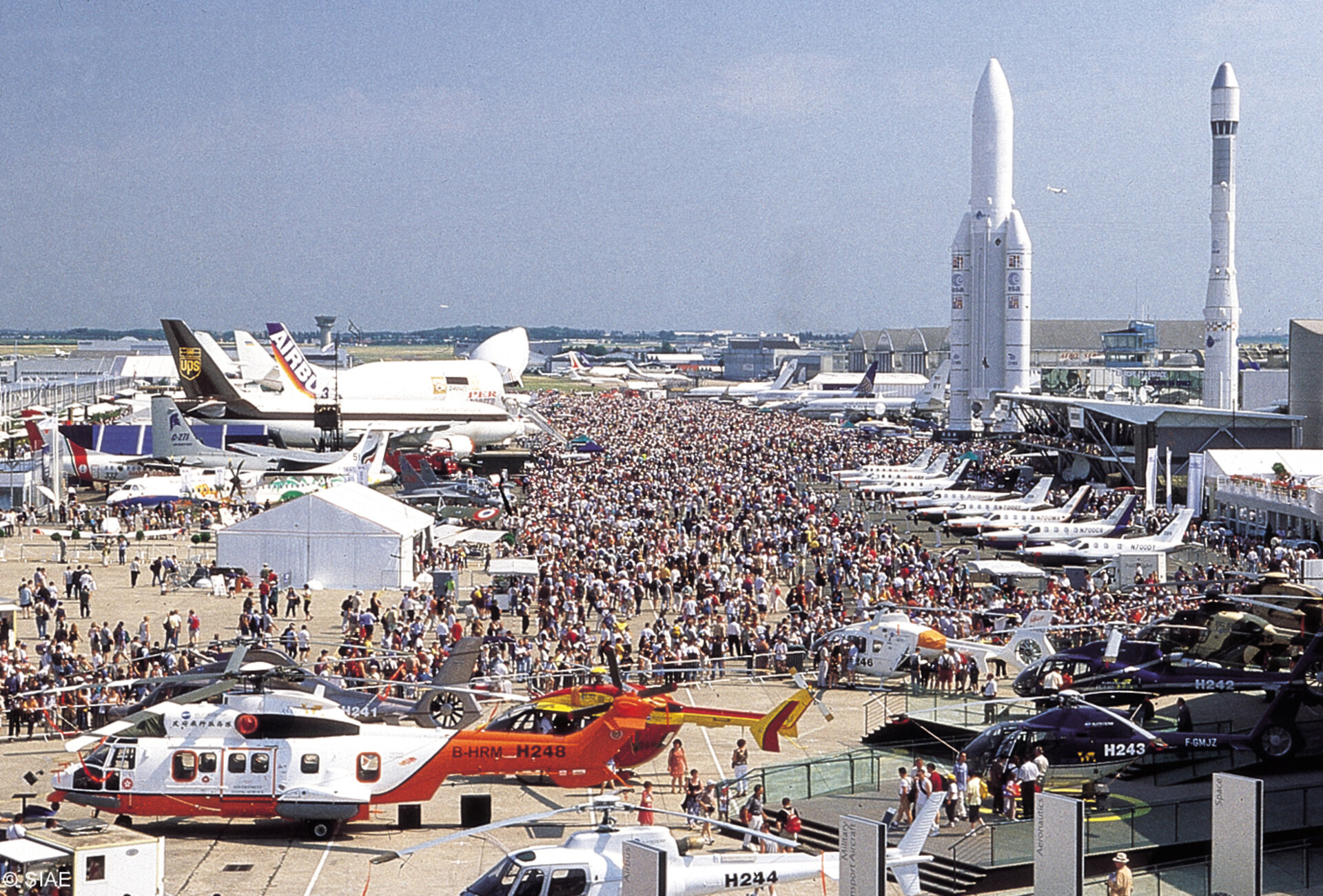ESA pavilion "L’Europe de l’Espace, Space for Earth" at the 48th Paris Air Show
The 48th International Paris Air Show will take place from 15 to 21 June at Le Bourget. The ESA Pavilion "L’Europe de l’Espace, Space for Earth" will be located in its usual place between the full scale models of the Ariane 1 and Ariane 5 launchers.
This year the theme of the pavilion is “Space, a key asset for Europe to face global challenges”. “This choice”, explains Fernando Doblas, Head of the ESA Communication Department, “aims to highlight the multiple roles of space: space as an enabling tool for Europe to take on the challenges facing humankind; space as a sector generating new technologies and contributing to a knowledge-based society; space for European growth and employment. Space is also a font of education, innovation and inspiration. A particular accent is given to astronomy and planetary missions in order to celebrate the International Year of Astronomy that aims to stimulate worldwide interest, especially among young people”.
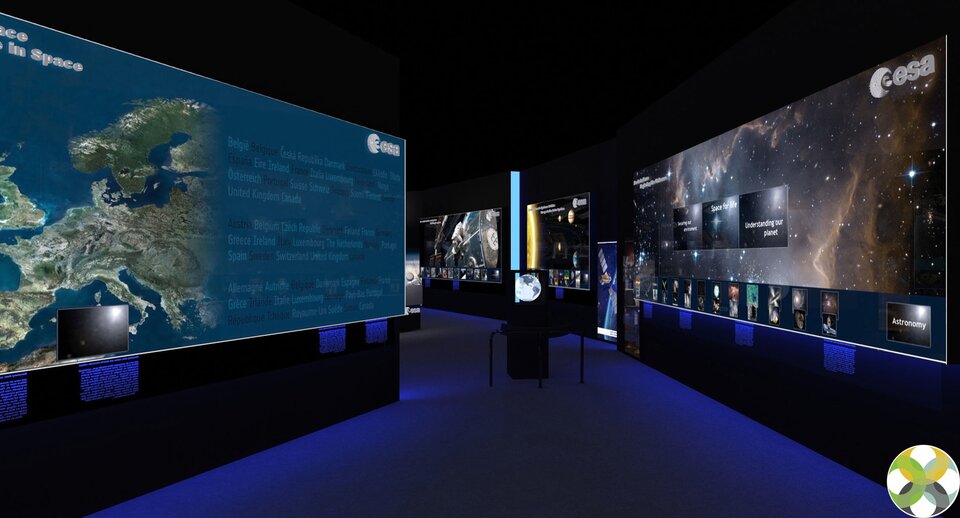
The exhibition is a journey from the boundaries of the Universe to the core of the Earth. The visit starts with an impressive image from the Hubble Space Telescope showing new born stars. This area, entitled “Space to Discover”, gives an overview of past, current and future ESA missions studying the Universe in different wavelengths, with a focus on the two cosmic explorers, Herschel and Planck, recently launched to study the origin and evolution of the Cosmos.
From the farthest stars we arrive in the Solar System. Images, videos and interactive “magic books” allow visitors to have a better understanding of Europe’s contribution in the exploration of Mars, Venus, Titan, Saturn’s largest moon, and comets. A special emphasis is given to BepiColombo and ExoMars, planned to be launched in 2013 and 2016. BepiColombo will explore Mercury to find out how planets close to stars form; and ExoMars will be ESA’s first mission to land a rover on Mars to search for signs of present, or past, life.
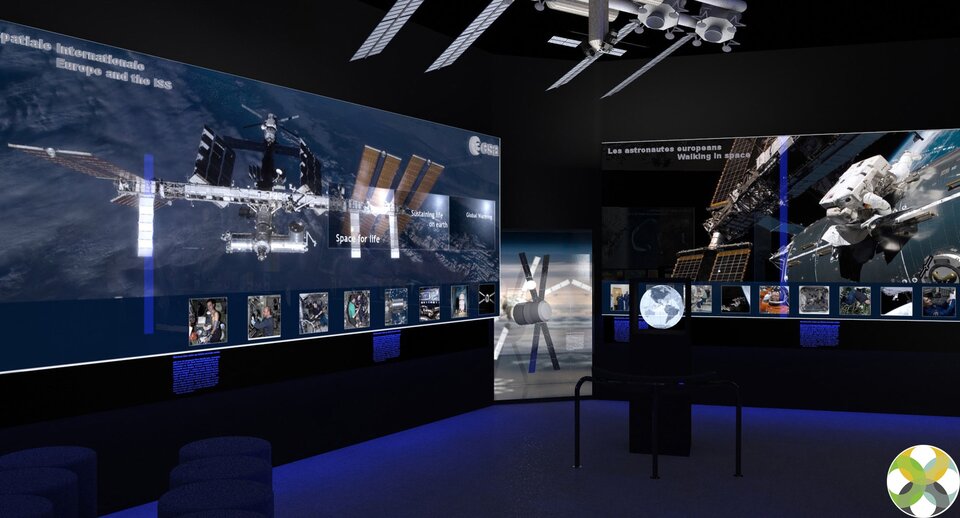
Touring the pavilion, it is possible to discover the world of microgravity. Medical advances, human physiology, biology, origins of life, new materials and fluid sciences are some of the many types of experiments carried out in the unique facilities onboard the Intenrational Space Station. The exhibition includes a scale model of the final configuration of the ISS and images of the next European elements for launch: the Cupola, a new observation and control area, and Node-3, a connecting element that also houses life support equipment for the crew.
Visitors can have a close view of the ATV mock-up and learn about the Columbus laboratory. This is one of Europe’s key contributions to the ISS where astronauts, including ESA Frank De Winne currently on board the Station, are carrying out experiments in weightless conditions bringing global benefits in plasma physics, bone and muscle studies. Results will also be important to prepare for human spaceflight to the Moon and beyond.

The central area of the pavilion is dedicated to the Earth. Data from Meteosat, Envisat and ERS show Europe’s leading role in understanding the global environment, Earth’s weather and climate change.
Space is also a vital tool to secure our environment: the EU-led initiative GMES, Global Monitoring for Environment and Security, will give Europe a better understanding of our ever-changing planet.
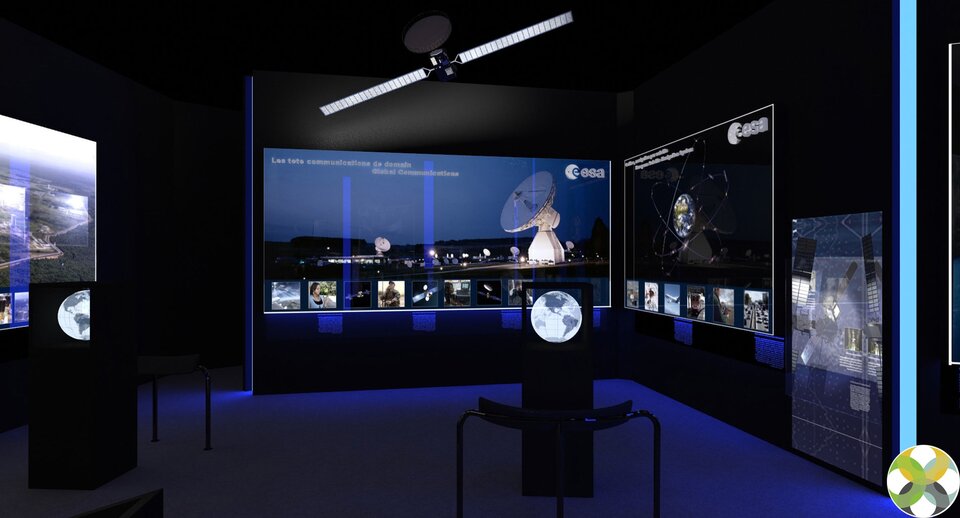
Visitors will learn more about ESA’s Earth Explorers, a series of missions to study the atmosphere, biosphere, hydrosphere, cryosphere and the Earth's interior. GOCE was the first of this new family to be launched; the gradiometer instrument onboard is displayed together with models of SMOS and CryoSat-2, both planned for launch in 2009.
The Proba satellites are part of ESA’s In-Orbit Technology Demonstration Programme. Proba-2, exhibited in the pavilion, will be launched in 2009 and will validate 17 new technology developments and carry four scientific experiments. Innovative technologies open up new possibilities for space missions and applications and maintain and expand the capabilities of the European space industry.
Walking around a spherical projection of the Earth, ESA visitors can have an overview as to how space technologies are opening up a new age in navigation with Galileo, the European satellite navigation system; and in telecommunications with Alphasat and Alphabus, the next generation of large platforms for high-power telecommunications satellites, and with Small GEO, a small geostationary satellite platform.
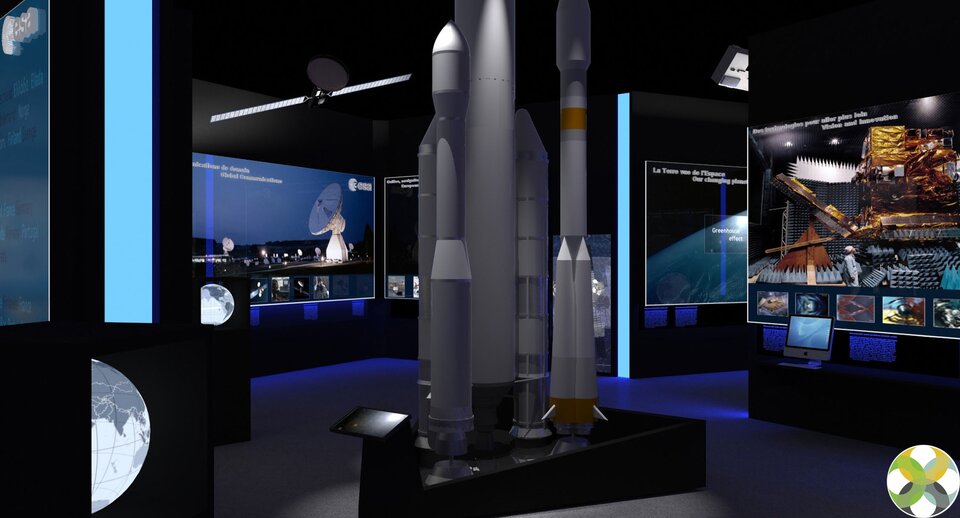
The visit ends with a huge panorama of the Europe’s Spaceport, images of the different hardware and a model of Ariane 5, of the Russian Soyuz and the small launcher Vega with its Zefiro engine. Europe’s expertise has been able to give us an independent access to space since 1979, and ESA is today developing concepts for future launchers in order to maintain its position at the forefront of space transport.
The ESA pavilion at the Bourget is open from Monday 15 to Sunday 21 June, with trade days 15-18 June, and open to the general public from 19 June. Throughout the week, the presentation area will host a number of presentations and events.
For further information, please contact:
Maria Menendez
Head of Exhibition Office
Communication and Knowledge Department
Tel.: + 33 1 5369 7167
e-mail: Maria.Menendez@esa.int
Wendy Slater
Exhibitions Officer
Communication and Knowledge Department
Tel.: + 33 1 5369 7418
e-mail:Wendy.Slater@esa.int
Annie Sorlin
Epsec, Exhibition Assistant
Communication and Knowledge Department
Tel.: + 33 1 5369 7590
e-mail: Annie.Sorlin@esa.int


